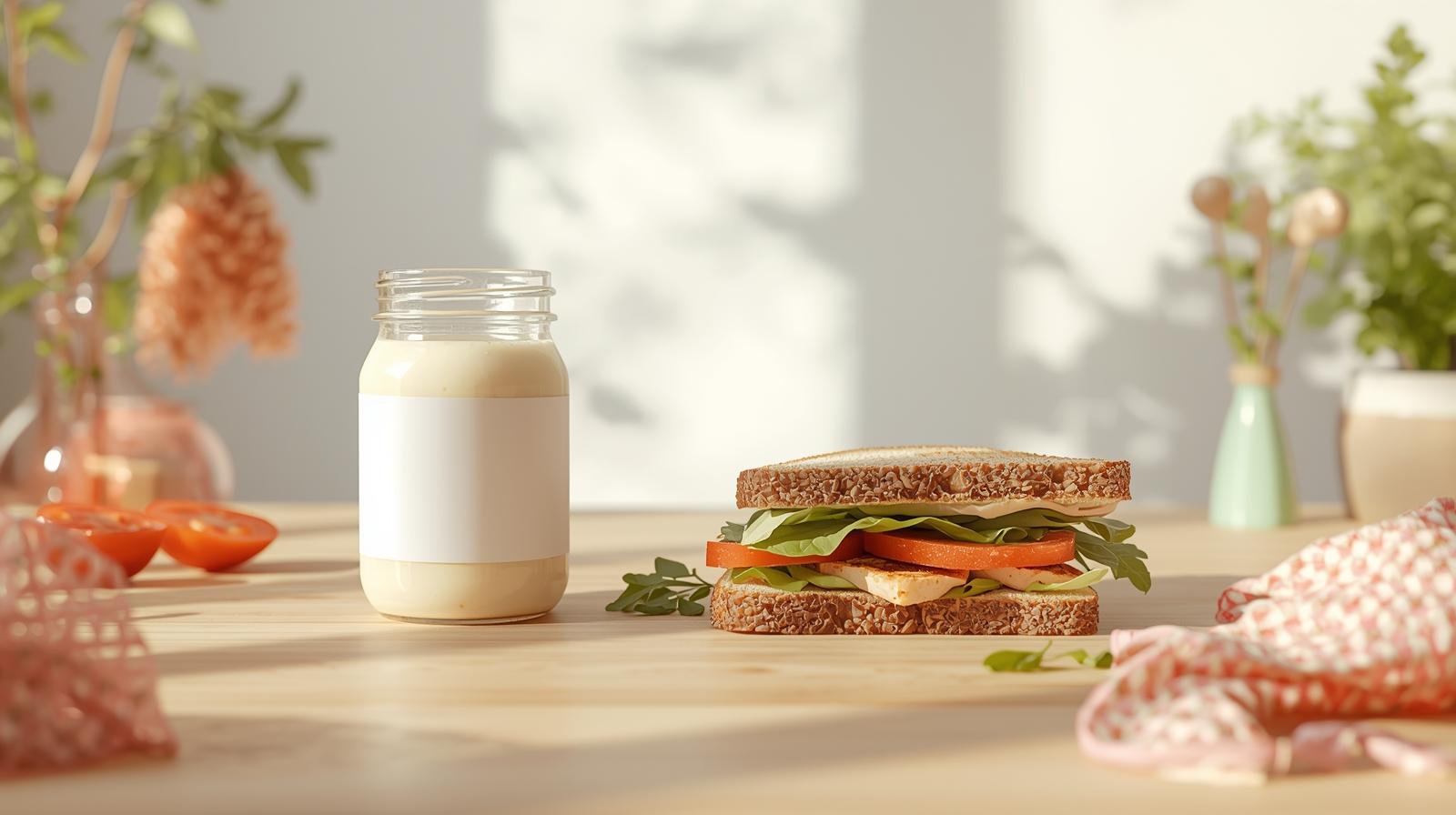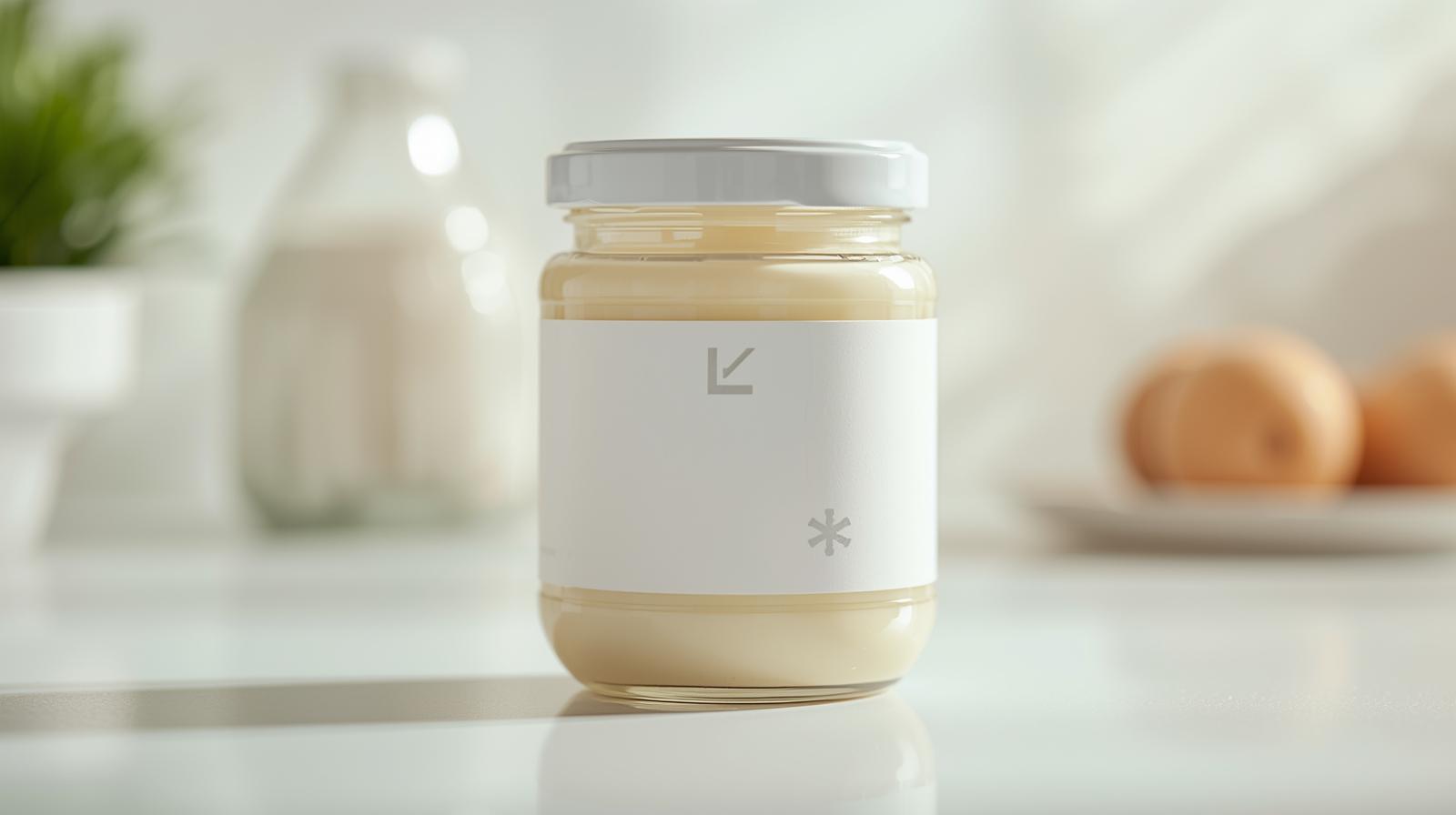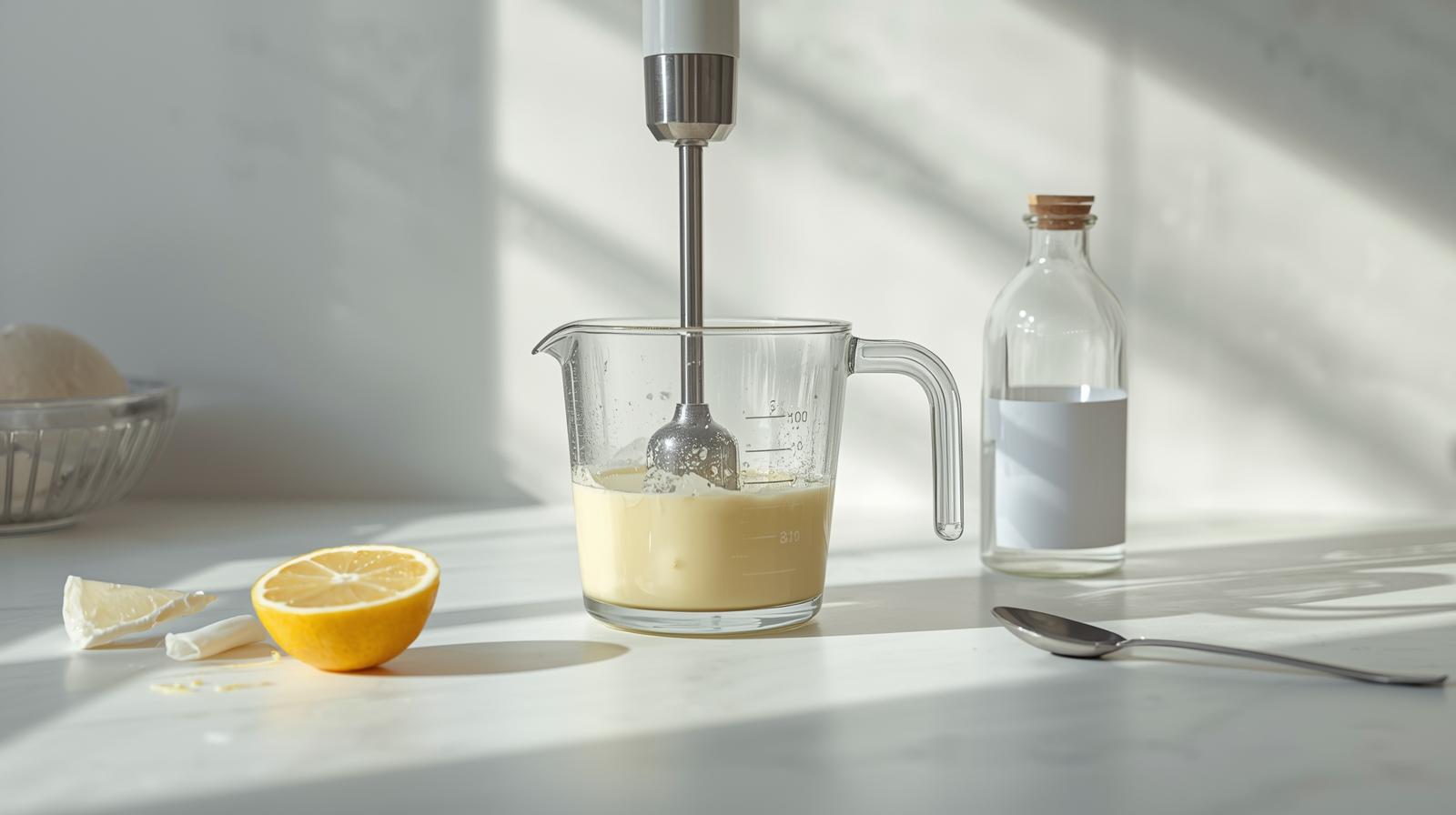🟩 Green (Go)
Commercial jar/sachet mayo using pasteurized egg/egg powder; eggless/vegan mayo (no egg). Refrigerate after opening; use clean utensils.

“Mayonnaise” can mean two very different things. In home and restaurant kitchens, classic mayo is an emulsion of oil + acid + egg yolk—and that yolk is traditionally raw unless pasteurized eggs are used. In supermarkets, the jarred products from mainstream brands are typically formulated with pasteurized egg/egg yolk or egg powder, controlled acidity, and factory hygiene. Same name, very different risk profile. If you’re pregnant, planning, or serving kids or older adults, knowing which mayo you’re eating is the key to confident, safer choices.
Classic mayonnaise gets its silky body from egg yolk emulsifiers. Many traditional recipes use raw yolks for taste and texture. Unless those yolks are pasteurized, the finished mayo remains a raw-egg product. That’s perfect for culinary purists but not ideal for people who need a lower-risk profile.
By contrast, commercial mayonnaise is generally made with pasteurized egg/egg yolk or egg powder, combined with controlled acidity and water activity. Sealed jars are shelf-stable; after opening, they require refrigeration. This pasteurized route dramatically lowers microbial risk—provided you handle and store it correctly.
Raw or undercooked eggs can carry Salmonella and other pathogens. The absolute risk varies by country, supply chain, farming practices, and handling—but it’s not zero. For most healthy adults, the risk is low; for pregnant people, infants, older adults, and the immunocompromised, a cautious approach is recommended. Mayo’s acidity helps inhibit bacteria, but it does not guarantee safety if a contaminated raw egg is used or if the dish is mishandled.
If a label or staff can’t confirm pasteurized eggs, treat it as raw-egg mayo and choose a safer alternative—particularly in pregnancy.

“Is your mayo/aïoli house-made with raw eggs, or do you use a commercial pasteurized mayo?”
Commercial jar/sachet mayo using pasteurized egg/egg powder; eggless/vegan mayo (no egg). Refrigerate after opening; use clean utensils.
Flavored jarred mayos (often saltier); street/restaurant items with mayo—okay if the mayo is pasteurized and kept cold; confirm handling.
Homemade/deli mayo or aïoli with raw yolk unless pasteurized eggs are confirmed; mayo salads left out at room temperature.
Pasteurization reduces risk but doesn’t make foods indestructible. Good handling is the difference between safe and sketchy.
Mayo is a condiment: big on flavor, light on micronutrients. Use it to enhance appetite and satisfaction, not as a primary fat in every meal. Try half mayo + half plain yogurt in dressings to cut calories while keeping creaminess.

When in doubt—ask, request a different sauce, or carry a sealed sachet of pasteurized mayo to control the variable.
In India, eggless mayo is ubiquitous—an easy way to eliminate egg risk altogether. In the US/UK/EU, large brands typically use pasteurized egg and provide clear storage guidance; the biggest variable is restaurant aïoli, which may be raw unless stated otherwise. Wherever you are, read labels and ask when dining out.
Pasteurized mayo handled cold keeps the risk of harmful bacteria low. That helps protect baby while you enjoy sandwiches, wraps, or salads safely.
Mayo is calorie-dense because it’s mostly oil. A spoon or two adds flavor and satisfaction—just keep portions modest and build a colorful, nutrient-dense plate around it.
Sometimes. Homemade and some restaurant versions use raw yolks; commercial jarred mayo typically uses pasteurized egg or egg powder, and eggless mayo contains no eggs.
No—avoid unless the kitchen confirms they used pasteurized eggs. Prefer commercial pasteurized or eggless mayo.
Acid (lemon/vinegar) helps but doesn’t guarantee safety if the starting egg is contaminated or the product is mishandled. Pasteurization plus proper storage is safer.
About 1–2 tablespoons per meal works for most diets. Adjust for your calorie goals and symptoms like reflux. Consider “half mayo + half yogurt” dressings.
Ask if the mayo/aïoli is house-made with raw eggs or a commercial pasteurized product. If they can’t confirm pasteurization, skip.
If the deli uses commercial pasteurized mayo and keeps salads cold, risk is low. If they make mayo in-house with raw yolks, that’s a higher risk—ask.
| quantity | 1 tbsp (~15g) |
| calories | ≈90 kcal |
| protein | ≈0 g |
| carbohydrates | ≈0 g |
| fats | ≈10 g |
| sugar | ≈0 g |
| limit Per Day | 1–2 tbsp per meal is practical; balance with nutrient-dense foods. |
⚠️ Always consult your doctor for medical advice. This content is informational only.

🔗 Visit bumpbites.health for more pregnancy food insights.